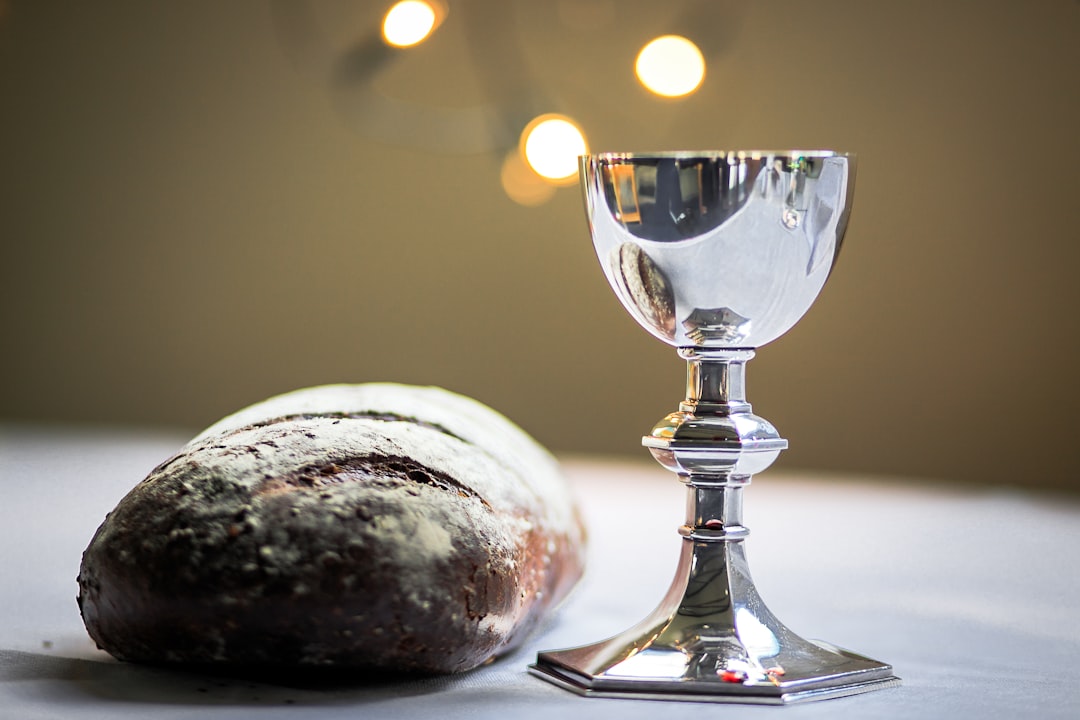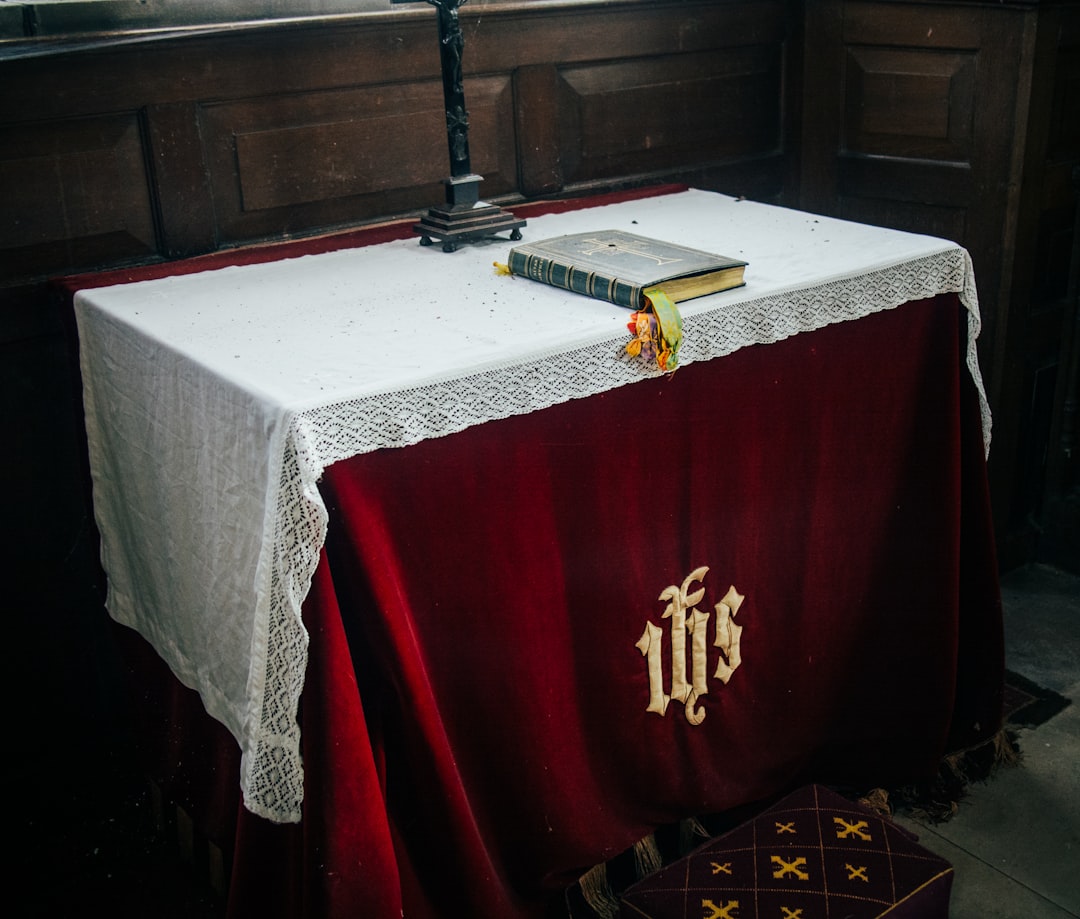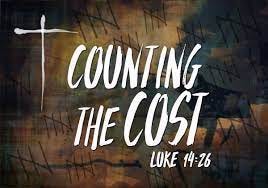A NEW CHALLENGE
Allen is bobbing his right leg up and down, up and down. Stimming. Gently, I put my hand on his knee and whisper, “It’s okay.” The movements stop but the set of his jaw tells me that he is still feeling nervous. For my son, an autistic adult, new routines are a challenge. We’ve been at this little church with its old-fashioned wooden pews and stained glass windows for over a year and Allen is used to the setting and the people. But today he’s embarking on a new challenge that has his senses on high alert.
Communion.

In the church we attended all of Allen’s life, a brass cup tray holding prefilled communion cups was passed down the rows of seats. Allen had control over the process: he took the little plastic cup out, held it until it was time to unpeel the little tab on top, and carefully picked up both–or sometimes only one–of the elements. I was confident that God, having created Allen and his neuro-divergent brain, understood Allen’s choices (I Corinthians 12:11).
But in this church where we sought comfort after my husband’s sudden death, communion is done in a different way. The little prefilled cups are available, but most people go up to the altar. And today, Allen was prepared to do “real communion.”
For most of us, taking communion is a holy time, done easily and without much thought. We commemorate the sacrifice of Jesus by the bread and the wine. We realize the steep cost to Him for our salvation. We do not need to overly think about the music, the walk down the center aisle and how fast we should go, how far to stand from the minister, the texture of the bread, or the taste of the wine.
My son does.
RUNNING THE GAUNTLET
Church is, as Daniel Bowman has observed in On the Spectrum: Autism, Faith and the Gifts of Neurodiversity, “a complex, multi-layered social environment, a gauntlet of unspoken rules and expectations requiring vigilant navigation” (112). When Allen decided he wanted to do “real communion,” we carefully broke down the steps he would need to follow: walk down the aisle to the altar, take a napkin from the table, hold out your hands to accept the bread dipped in wine, say “Amen”, and head back to your seat down a side aisle. And all the while music is playing and people are watching you and someone else is touching your bread. Allen had shuddered at the idea of intinction–the bread dipped into the wine.

“You can ask the pastor not to dip it,” I had told him, giving my son one more thing to remember.
On the altar, the pastor is holding the bread up high as it is broken and the members of the choir are coming down from the loft to line up. I can feel Allen tense. His leg starts to bob again.
“You don’t have to do this,” I tell him. “No big deal.”
“I CAN do it,” he whispers back. “I just need to get ready.” He takes a deep breath and the leg stops bobbing. He closes his eyes and I think he is probably visualizing each step of the process we’ve gone over. His lips are moving silently. Is he practicing the “amen”?
Once the choir has returned to the loft, the ushers start at the back of the church, letting each row know when it is their turn to approach the altar.
We wait. Allen’s leg bobs. His lips move. My nerves jitter.
It is our turn now. Allen stands up, squares his shoulders, and steps out into the aisle. I follow my tall son to the front. I alone know what a big moment this is for Allen, how he’s needed to step out of his comfort zone to attempt this.
COUNTING THE COST
“It always comes back to counting the cost,” says Daniel Bowman (124). I know what the cost of this will be; his energy will be sapped from so much concentration on societal expectations, so much sensory input, and the unknown taste and texture of the bread he is about to receive. He will need a long nap this afternoon as he recharges from what appears to be a simple procedure.
Allen has counted the cost. He told me he wanted to do it because, “it’s what they do in this church.” There is the innate desire to be accepted, to be seen as “one of” not “other”.
I hold my breath as Allen takes the napkin, shakes his head before the bread is dipped into the wine, and says a quiet but audible “Amen”. I accept my own “body and blood” and follow him back up the side aisle to our pew. I try to concentrate on the sacrifice of Christ, who must have counted the cost of the Cross Himself and found it worth it. But I am still on “mom alert”, watching as Allen moves the morsel of bread to his mouth: the texture of it on his tongue was something I could not control.
He swallows. I relax back against the pew. Then I see a puzzled expression on my son’s face. He stares at the napkin in his hand and my heart flutters. I have not told him what to do with it! But he folds it up carefully and slides it into his pocket.
I want to jump to my feet and shout, “He did it!” but I am aware, as Allen is, of social conventions. I thank God silently for this step in Allen’s journey, one more ritual that binds him to this community. As Madeleine Ryan notes in I’m autistic…and I that doesn’t mean I need to be cured, “The safety of rituals and routines cannot be overstated.” As much as anyone else, Allen wants to belong.
BELONGING
The rest of the service passes quietly, but I keep an eye on Allen as we exit into the Welcome Center. It is his turn to rinse out the coffee urns and he stands patiently to the side, watching others as they take cups and mingle. A few speak to Allen; he always responds but does not initiate conversations.
I am proud of him. The challenges of his life have been many. The sudden death of his father left him devastated and lost. But here he is, moving ahead at his own pace, finding a place where he can belong. I catch his eye and he gives me a thumbs up: All is well.
My heart swells with the desire of others to see Allen as I see him, an “image Dei”-- an image-bearer of God.
He just happens to be autistic.





This is beautiful. Thank you for sharing such detail that we don’t ever think about. I would have never imagined how communion could bring such nervousness to an autistic person.